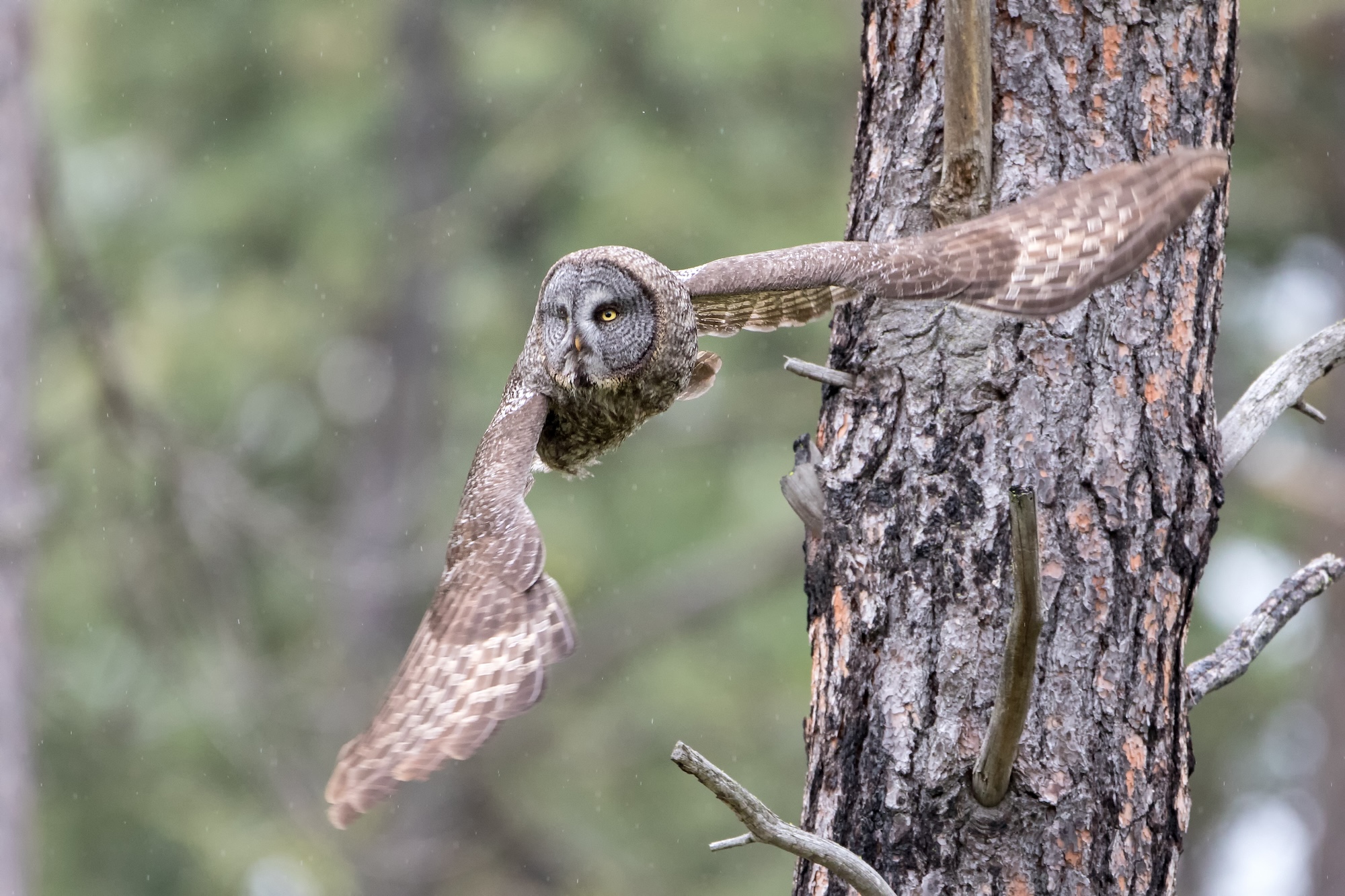| Scientific Name Strix nebulosa Size 24 to 32 inches in length, weighing up to 3.2 pounds Habitat Old-growth forests for nesting, and open grassing clearings for foraging Status State Listing Status: Sensitive |
About
Great gray owls have striking, bright yellow eyes, and circular facial discs with concentric rings of dark and light feathers. Their bodies are mottled gray, brown, and white. The great gray owl is Oregon’s tallest owl, measuring up to 32 inches in length!
Great gray owls have a broad range in the northern hemisphere spanning the northern regions of Europe, Asia, and North America. These owls are a rare sight in Oregon, where they can only be found in forested areas above 3,000 feet in the Cascades, Blue, and Wallowa mountains. Great gray owls require old-growth forests for nesting, and need open grassy clearings for foraging. These owls are predators, feeding on small mammals such as gophers, mice, shrews, squirrels, and weasels. Great gray owls help maintain a balanced ecosystem by keeping small mammal populations under control.
Why do they need our help?
Unfortunately, logging is a huge threat to the species. In order to conserve great gray owl populations in Oregon, we need to maintain late-successional old-growth forests with adjacent open meadows. Prescribed burns can help to maintain their necessary habitat mosaic, as well as protecting known nest sites from logging.
Did You Know?
- These owls are able to locate prey by sound, and can plunge into over a foot of snow to catch rodents.
- When it comes to nesting, great gray owls are resourceful, often using abandoned nests built by other large bird species.



